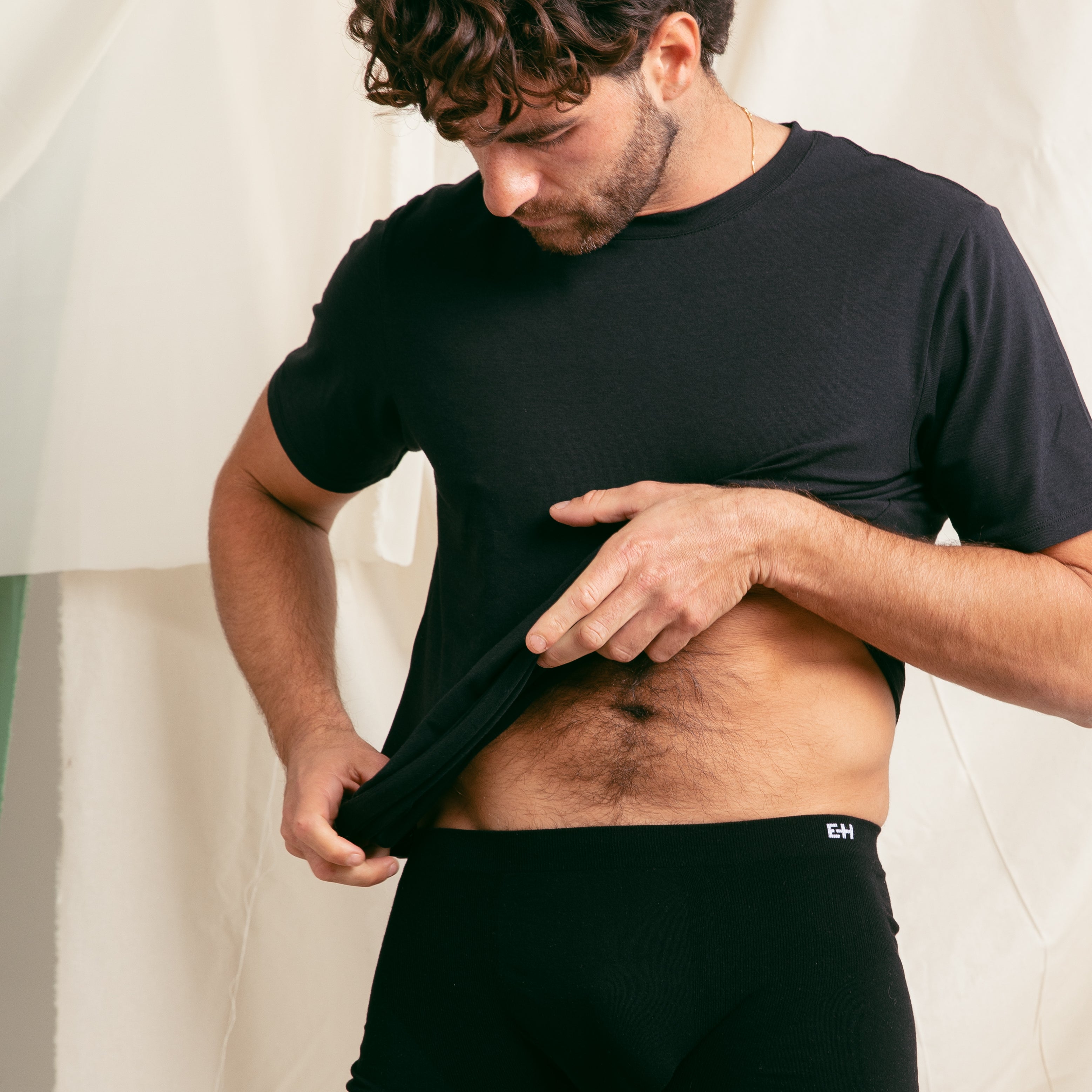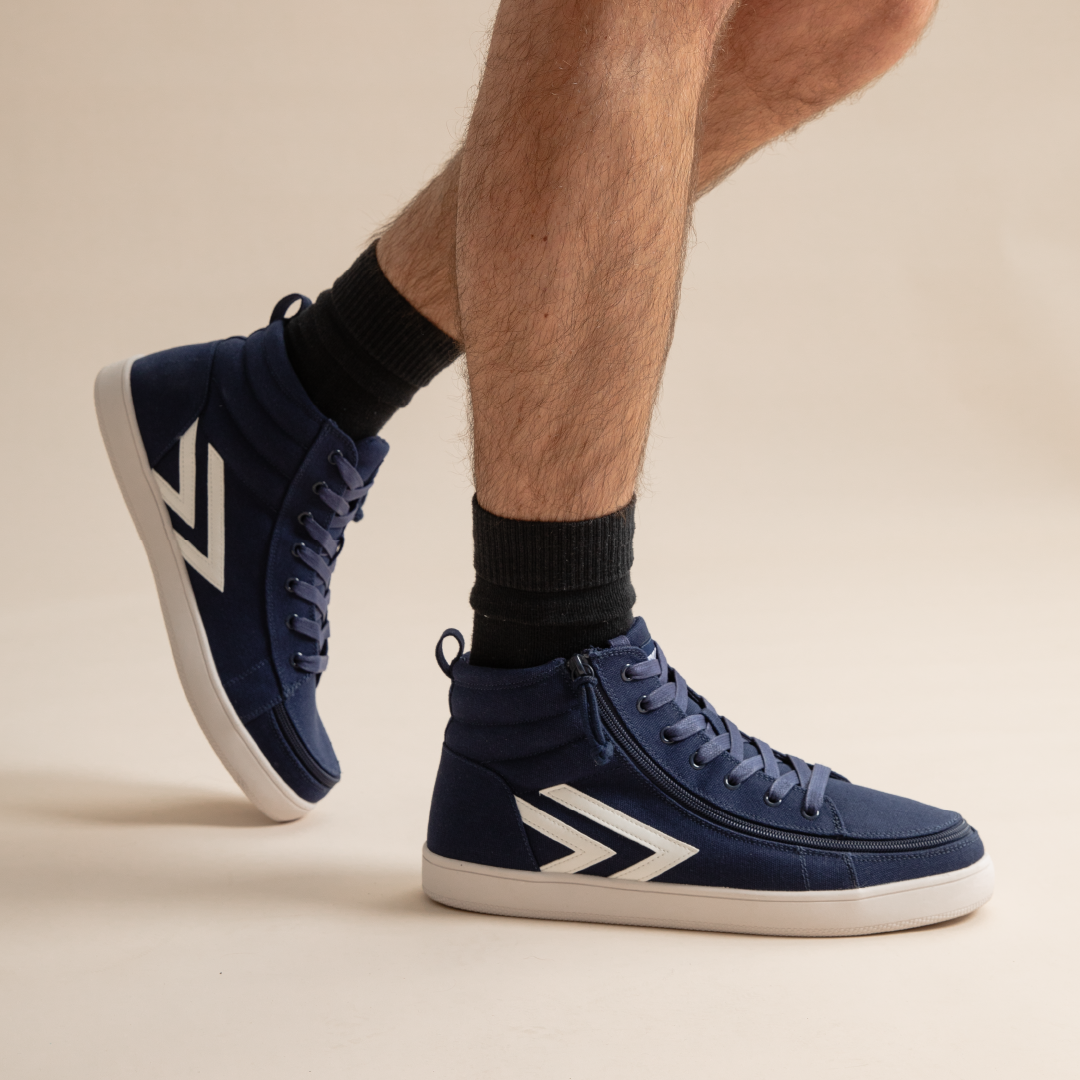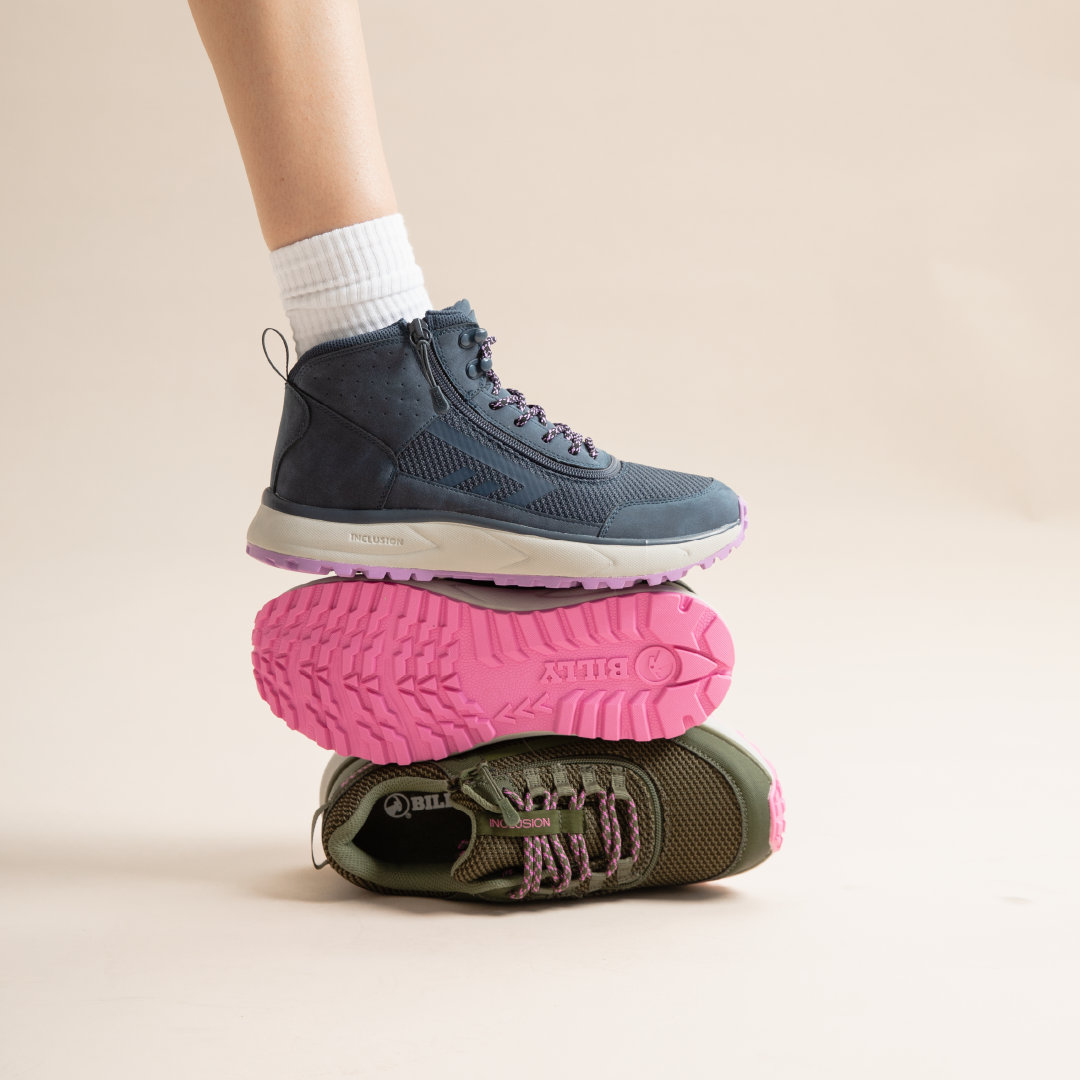Adaptive fashion has the power to help people of all abilities dress independently and express themselves through their unique style.
But what makes adaptive fashion so special and how does it differ from traditional apparel?
If you’ve ever wondered how adaptive clothing blends fashion and function to create an easier dressing experience, you’re in the right place.
We’re exploring how simple (but innovative) alterations to clothing can make a world of a difference for people from all walks of life.
Let’s get into it.
Magnetic Closures
Buttons can be found on all types of clothing, from work shirts to cardigans, to casual jeans and chinos. But they can be challenging to use for people who have fine motor difficulties, arm paralysis, or limb difference.
Enter: the humble fridge magnet. When Maura Horton discovered her husband struggling with buttons as a result of his early-onset Parkinson’s Disease, she had the genius idea to replace button closures with magnets. This sparked the birth of the adaptive fashion brand, MagnaReady.
Thanks to her stroke of inspiration, adaptive clothing now features the same stylish button-up look without the button-fumbling headache. Instead of threading a fiddly button through a tiny hole, the magnets will easily fasten together in a snap!
This ingenious magnetic technology can be found in all sorts of adaptive clothing, including Elba London’s front-fastening bras, Tommy Adaptive’s Oxford Shirt and Polos, and MagnaReady’s entire collection.
Velcro/ Magnetic Shoulder Openings
Tugging and pulling a tight shirt or jumper over your head can be an inconvenient and often uncomfortable experience - especially since the head-openings in traditional clothing are generally one-size.
By including a magnetic or velcro opening along the shoulder, anyone can easily open up and expand the head-opening, so they have ample space to weave their head through.
inc kid’s Treasure Jumper is specifically designed with soft velcro openings on the side of the neck so parents can easily pull the jumper over their kids’ head or empower their child to dress independently.
Tommy Adaptive’s range of Crew Tees also features magnetic shoulder openings so everyone can wear the signature, sporty tee without the hassle.

Open-Back Clothing
Because shirts and jumpers are traditionally pulled over your head or buttoned-up at the front, it can be challenging to wear for people who can’t raise their arms above their heads or have partial paralysis.
But adaptive clothing that fully opens up in the back allows people of all abilities to slip the shirt on from the front without raising their hands. This is especially handy for wheelchair users who need the help of a caregiver to get dressed. Instead of struggling to maneuver their body into the shirt or jumper in the seated position, they can simply thread their arms through the sleeves from the front with minimal discomfort.

IZ Adaptive’s shirts feature snap buttons on the back that are easy to open and close while seated. The Tommy Adaptive Seated Knit Sweatshirt is also designed with velcro closures down the centre of the back so children everywhere can dress with style and ease.
Zipper Technology
While zippers are commonly found on jackets and jeans, they can also be useful on other types of clothing.
Take shoes, for example. Trendy sneakers are fashionable to wear, but for people with loss of dexterity in their fingers or limb difference, wearing shoes and tying laces can be a monumental challenge.
Luckily, BILLY Footwear came up with a solution. Every shoe uses innovative zipper technology that allows the top of the shoe to open up completely so you can slip your foot in with ease. Their extra-wide shoes also accommodate leg braces and AFOs with ease, so everyone can wear the perfect pair of kicks.

Zipper technology has also been incorporated into shirts for people with post-surgery needs. Reboundwear’s Lindsey Top is designed with 5 separate zippers so you can easily slip in and out of the shirt without reinjuring your shoulders. It also gives you quick access to any wound sites or surgical ports.
Wide Leg Openings
Because pants and jeans typically have tight, restrictive leg openings, people with disabilities are usually unable to wear stylish, flattering jeans in their day-to-day lives.
To overcome this, adaptive pants and jeans are designed with wider leg openings that can easily fit over AFOs or leg braces without the constant tugging or pulling.
inc kid’s Sea Buggy Jeans are designed with long pull-up zips on the side of the leg that expand the openings so kids no longer have to tug it over their orthotics.
The Tommy Tape Jeans also feature lower leg zips so everyone can sport the fashionable ‘skinny jean’ look without the inconvenience.
Side Fastening Underwear
Traditional underwear requires you to bend over and step into them to get dressed. But for people with limited mobility and wheelchair users, wearing underwear can be a long and frustrating process.
Slick Chicks’ underwear is designed with side-fastenings that open up the underwear completely. Instead of tugging the underwear up or down, anyone can easily wear it while seated, lying down or standing up. This innovative design alteration has been instrumental in giving people their independence and dignity back while they’re getting dressed.
High-Raised Back and Low-Rise Front in Pants
For wheelchair users, finding pants that are both stylish and comfortable to wear can feel like a neverending search. Traditional jeans and pants are usually hard to pull on, creates uncomfortable bunching, and can reveal too much skin in the back.
But adaptive seated-wear is specifically designed with a raised back and a lower front so the material doesn’t bunch up at the front. The raised back also gives wheelchair users complete coverage while they’re seated or during transfer, which ultimately preserves their dignity.
The Tommy Seated Chino and IZ Adaptive Seated Jean Yoga Waist perfectly capture this innovative feature so wheelchair users everywhere can feel comfortable in a fashionable pair of pants.
Tagless & Seam Free
Everyone has experienced the irritation of a scratchy tag or seam. But for people with sensory issues or Autism Spectrum Disorder, this sensation is ‘heightened’ and can distract them from engaging in the present moment.
A key feature of adaptive fashion is the types of fabrics used to create the clothing. Many adaptive fashion designers are intentional about the materials they use to give wearers extra comfort. inc kid’s Treasure Jumper was specifically designed with 100% organic soft cotton and zero tags to avoid irritating children’s delicate and sensitive skin.
When it comes to designing adaptive clothing, all it takes is a few simple alterations to give people of all abilities a fashionable and accessible wardrobe. Our hope is that more mainstream fashion designers will implement these alterations to their designs so that the fashion industry can become inclusive once and for all.
Until next time,
EveryHuman












Leave a comment